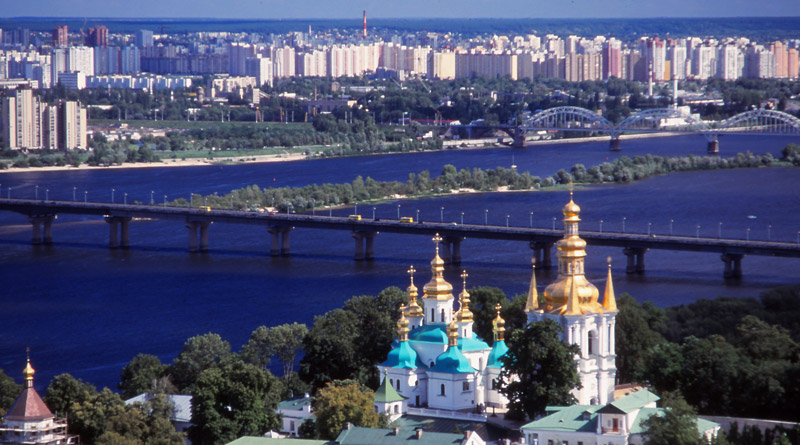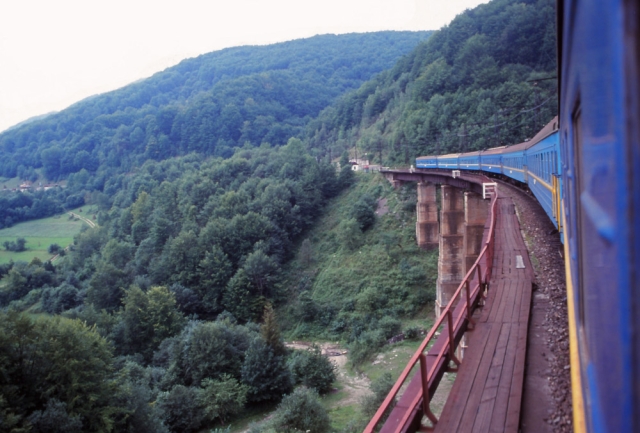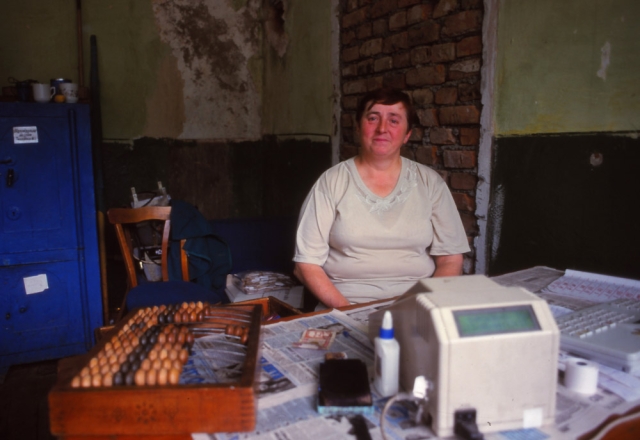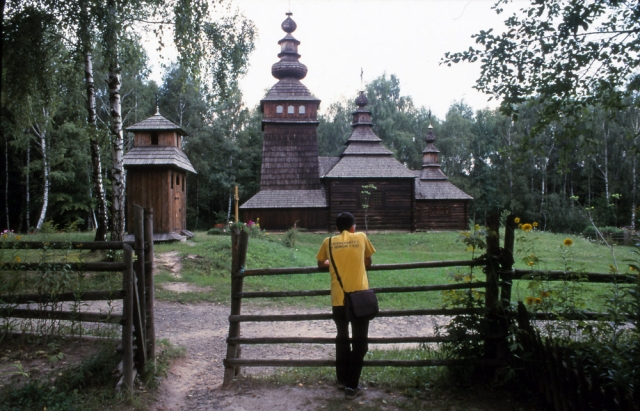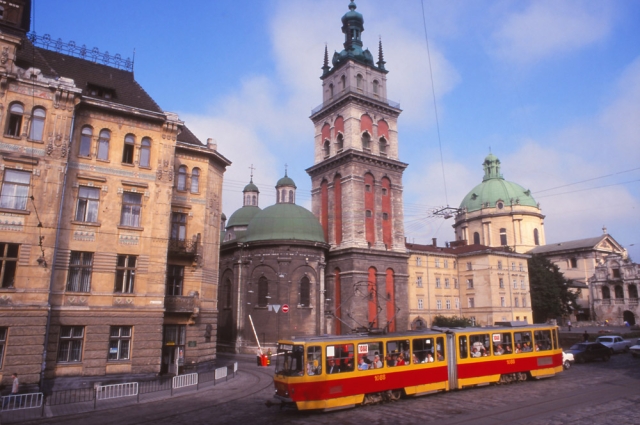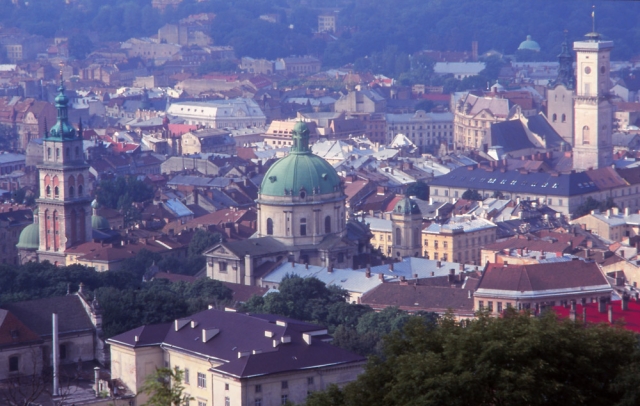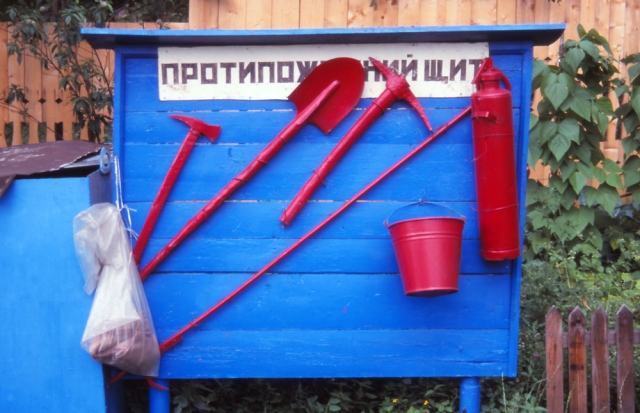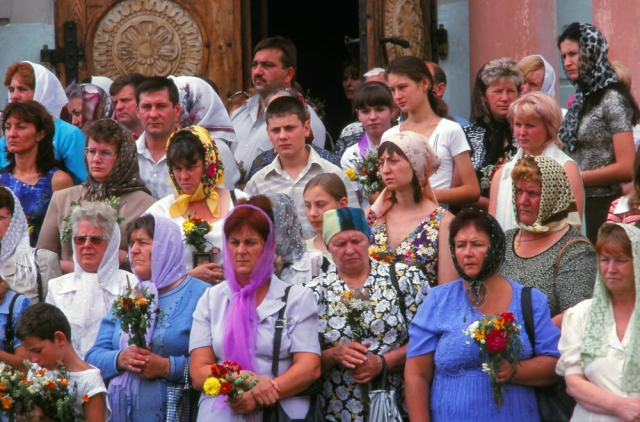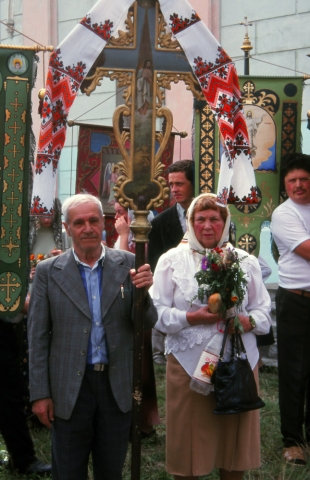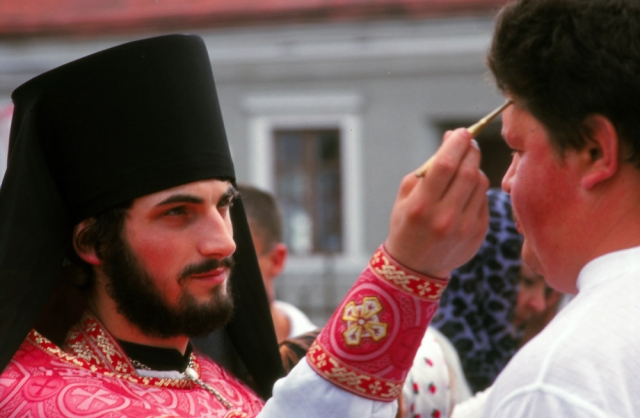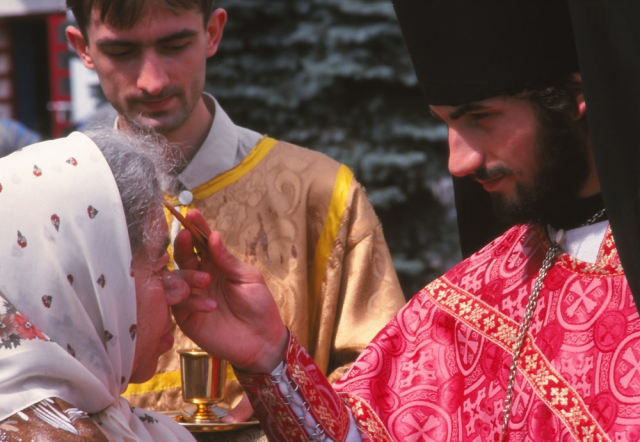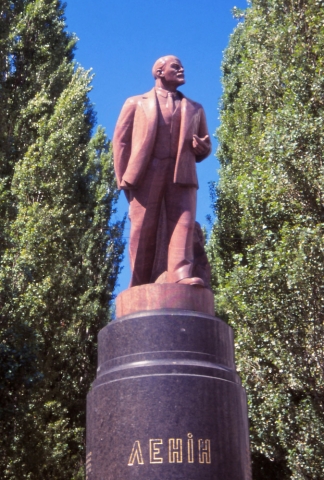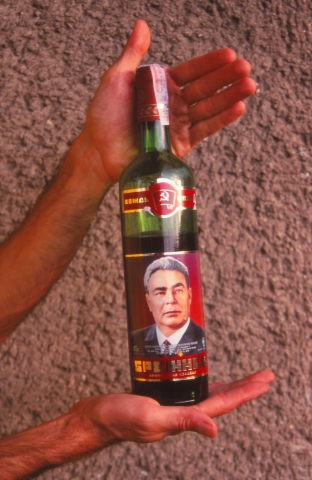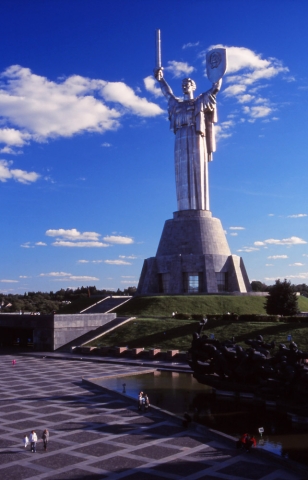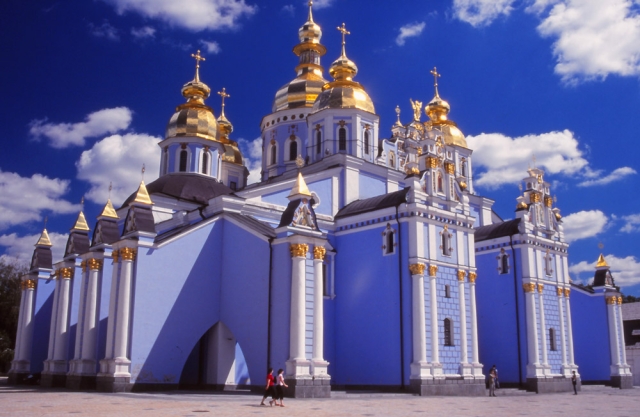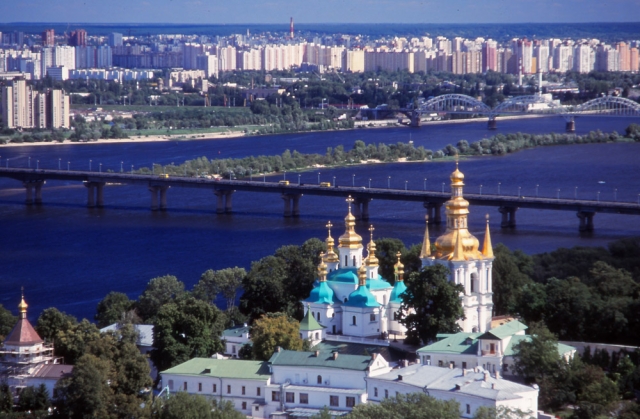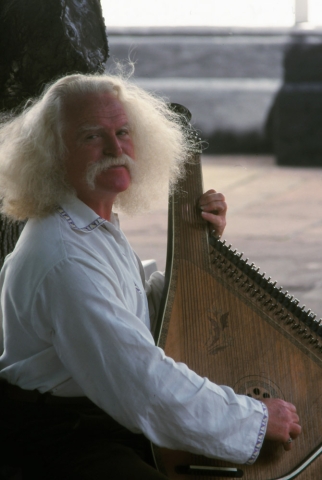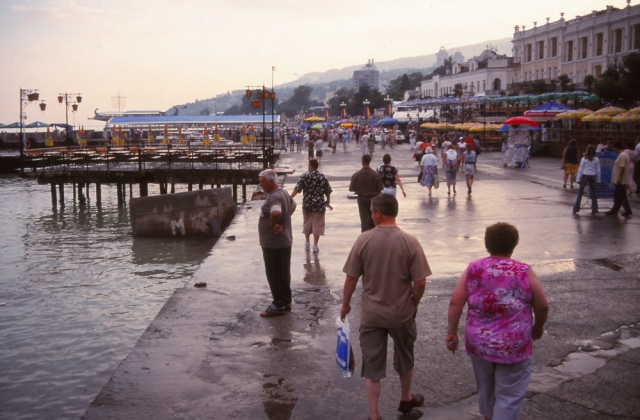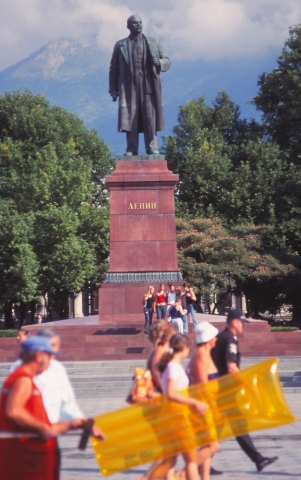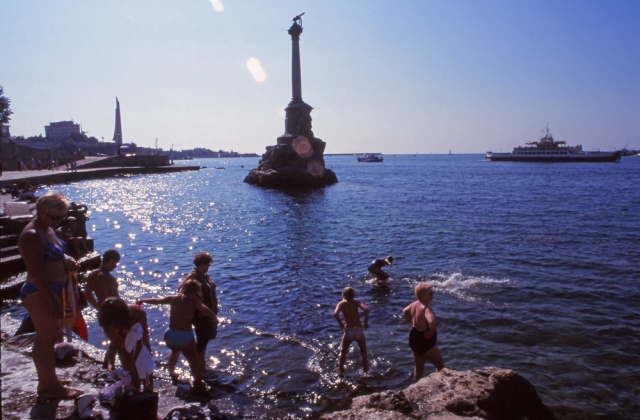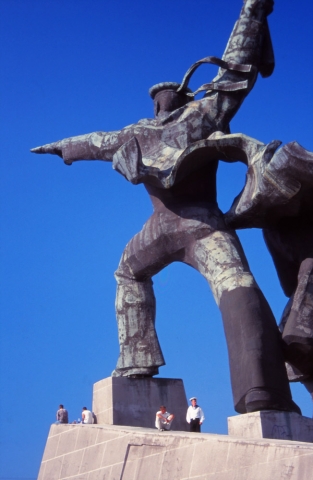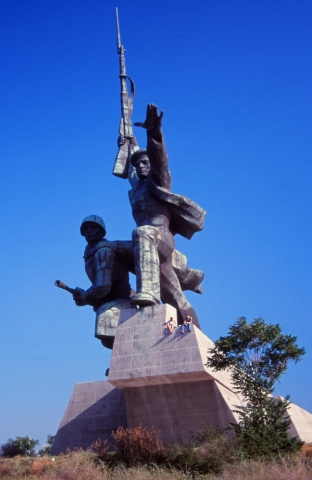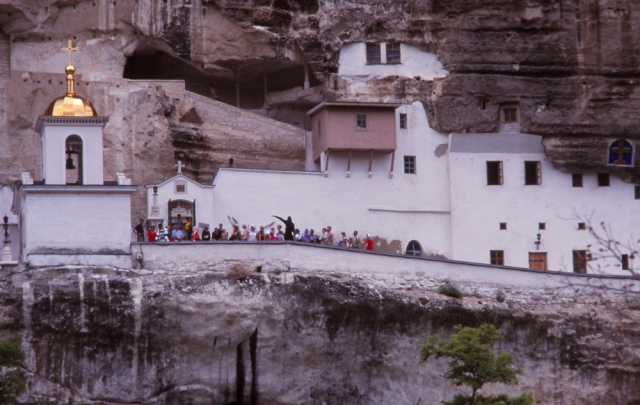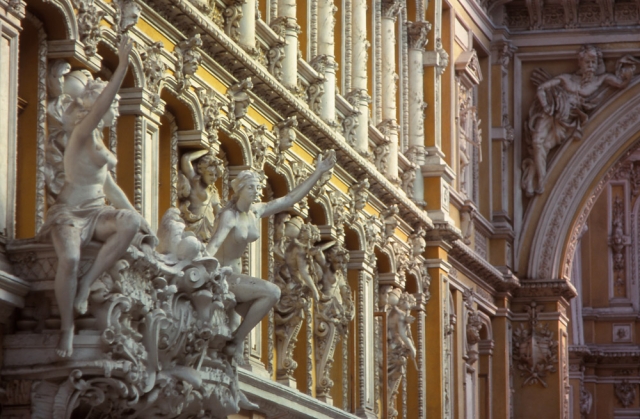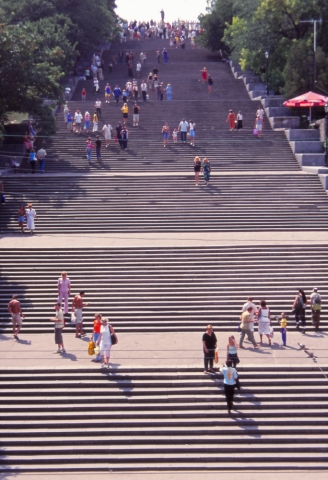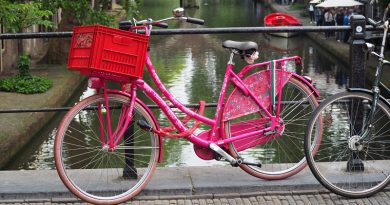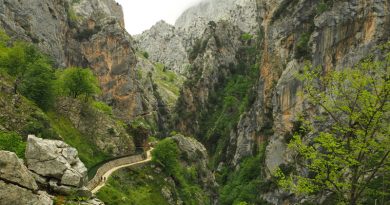Ukraine revisited: Invasion rekindles memories of long-ago trip
| Travel in a time of coronavirus With new travels off the menu due to the Covid-19 pandemic I’ve instead been delving into my diaries and scanning my old slides to bring you some stories and photos from the past 25 years. This time, for obvious reasons, I’m going back to the early 2000s to revisit a challenging but memorable trip to Ukraine. |
It was a case of third time lucky when I managed to get into Ukraine in 2004.
It’s a very different country now, but when I first tried to visit in the 1990s Ukraine had only just emerged from the wreckage of the Soviet Union and tourism wasn’t exactly a priority.
A bunch of friends were going on a hiking holiday in the Carpathian Mountains, just over the border from Slovakia, and I was desperate to join them. Ukraine didn’t issue tourist visas at that time so I tried to wrangle a personal invitation. The notoriously unhelpful embassy in Prague wasn’t impressed. I still have the refusal letter.
Fast-forward to another failed attempt and then to the 2000s, when Ukraine started opening its borders to international visitors. I finally got a visa — though it came with a hefty price, US$50 for a three-week permit — and caught a train to the border with Hungary.
My time in Ukraine was far too short for a country more than twice the size of New Zealand but it was long enough to leave me with some impressions.
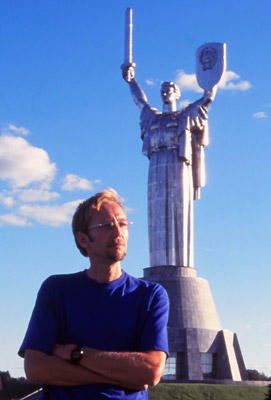
Vibrant, historic Lviv, packed with students, markets and cafés serving Turkish-style coffee, was my favourite city. With a Habsburg heritage shared by cities like Prague and Vienna it could have been anywhere in central Europe, but it had the added buzz of being in a newly independent country.
Like Texas, everything in Kyiv, the newly minted capital city, was big: The sprawling socialist-era housing estates, the broad River Dnieper, and especially the monuments.
Towering 62 metres over the city (or 102m if you include the base), the stainless steel Motherland Monument is still the world’s third tallest statue outside Asia. Even the sword gripped in the warrior figure’s right hand is 16m long and weighs 9 tonnes. The monument’s ‘eternal’ flame uses so much gas — up to 400 cubic metres an hour — it can only be turned on during the most important national holidays.
Kyiv is also home to the extraordinary Caves Monastery, built on top of a labyrinth of catacombs and sacred to orthodox believers in Ukraine, Russia and beyond. (Interestingly, Kyiv is where Slavs and Vikings founded the first Russian state in the 9th century. Their empire later became known as Kievan Rus.)
In recent decades Kyiv has been transformed from provincial Soviet city to a kind of showcase of the Ukrainian state. The makeover was just starting when I visited.
I couldn’t help but be impressed by the resilience of Ukrainian national identity despite 70 years of Soviet oppression. That was exemplified for me by the rebuilding of St Michael’s Golden-Domed Monastery, once one of Kyiv’s greatest buildings.
This fabulous blue and gold religious complex had its origins in the 12th century, was rebuilt in baroque style in the 18th century, and was demolished by the Soviets in the 1930s to make way for a city administration building.
It was rebuilt brick by brick after Ukraine’s independence in 1991 and re-opened in 1999.
Story continues below the photo gallery. Click on the previews to see full-size images.
I also loved the trains in Ukraine. The country is so big people do much of their travel by sleeper train. The trains are big too, with wide-gauge tracks that make compartments feel like mobile living rooms and tea that’s always brewing in a samovar at the end of the carriage.
The Crimea, a rugged, rocky peninsula jutting into the Black Sea, was another highlight for me. Its almost Mediterranean landscape was a stark contrast to the flat, featureless wheat fields stretching almost 1200km across the rest of Ukraine.
Crimea also has some fabulous towns — like Sevastopol, until the 1990s a Soviet navy base off-limits to outsiders, and Yalta, a seaside playground for Russian holidaymakers — plus a fascinating mix of Slavic and Muslim influences. Most people in Crimea speak Russian but the peninsula has a sizeable Tatar minority who speak a Turkic language and practise Islam.
From a tourist’s perspective Crimea was probably the best part of Ukraine at that time, but it was of course annexed by Russia in 2014 in an earlier phase of the conflict.
Those were some of the highlights in 2004. Ukraine has apparently advanced hugely since my visit but back then there were also plenty of lowlights.
At times getting around was difficult. On the rare occasion a railway station had an information booth, the one thing you could be sure its staff wouldn’t offer was information. Sometimes they’d pull down the blind as soon as they saw me approaching.
Once it took my travelling companion and I two hours to find out how to buy tickets to our next destination, even though he spoke a smattering of Ukrainian. Then it took another hour to find the platform (it wasn’t in the station).
Alcoholism was common, as were vicious beatings meted out to homeless drunks, seemingly just for fun. Worse was the terrible, grinding poverty in some rural areas.
I recall arriving in a small town at 3am and finding the railway platform lined with elderly women begging for kopecks (a coin worth a fraction of a cent) or trying to sell a few miserable vegetables.
Tensions between Ukrainian and Russian speakers were obvious even then. On one occasion a man wanted to beat me up because he was convinced I was pretending not to understand Ukrainian. I was saved by a young woman who explained I was a tourist, not a Russian, and I really didn’t understand the national language.
I didn’t stay long in Ukraine — I had a long list of places I wanted to visit on the same trip, including two bucket-list destinations, Georgia and Iran — but now I’m sorry I didn’t explore a little deeper.
My final experience of Ukraine was on board a ferry from Odessa to Istanbul. The two-night voyage across the Black Sea was pleasant enough for me but it was also a sobering lesson about the awful choices faced by some Eastern European women.
But that’s a whole other story. I’ve called it The Love Boat. The title’s a clue.

